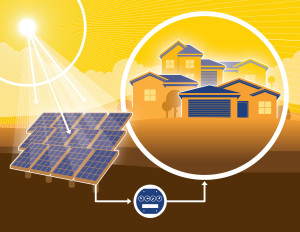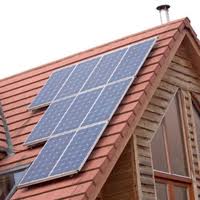 Community solar at Austin Energy is one step closer to being a reality. After months of negotiations, Austin Energy signed a 25-year power purchase agreement (PPA) with PowerFin Partners for a solar farm of up to 3.2 megawatts that is to be the first stage of the utility’s planned community solar program. The east Austin site selected by Austin Energy for the project offers some challenges, which is why the negotiations took some time, but now the project can begin. Local solar installers at Native and Greenbelt Solar will do the installation work, when the time comes.
Community solar at Austin Energy is one step closer to being a reality. After months of negotiations, Austin Energy signed a 25-year power purchase agreement (PPA) with PowerFin Partners for a solar farm of up to 3.2 megawatts that is to be the first stage of the utility’s planned community solar program. The east Austin site selected by Austin Energy for the project offers some challenges, which is why the negotiations took some time, but now the project can begin. Local solar installers at Native and Greenbelt Solar will do the installation work, when the time comes.
Community solar is eagerly awaited by environmental and affordability advocates because it has the potential to fill a gaps in Austin Energy’s existing solar programs. These gaps are caused by a couple primary factors.
The first gap is low-income residents. While solar costs have dropped dramatically in recent years and solar is undoubtedly a good long-term investment, it still requires either an up-front investment or the credit worthiness to secure a loan or lease. Low-income residents will almost certainly not have cash on hand to buy a solar system and are also much less likely to qualify for a loan or lease because of poor credit scores and/or insufficient income. If the program is structured properly, community solar can provide affordable energy at a fixed rate for decades.
The second gap is people whose homes aren’t suitable for solar. There are many factors that can make a home unsuitable for solar. Many homes have little roof space that is facing south or west, the best orientation for solar. Other homes are shaded by trees or even other buildings. Trees provide cooling benefits in hot Texas summers, increase property values, clean our air, and make our streets and communities more livable, so cutting them down just to make way for solar isn’t a good option. Community solar is a much better solution.
Austin Energy has yet to announce how the community solar program will be structured. Community solar projects across the country come in many forms. Some offer customers the opportunity to purchase or lease a portion of a system. Others offer subscriptions to the energy produced from a portion of the system, at a fixed cost. Whatever program design Austin Energy comes up with, hopefully it will reflect the benefits of solar – low costs and fixed pricing.



